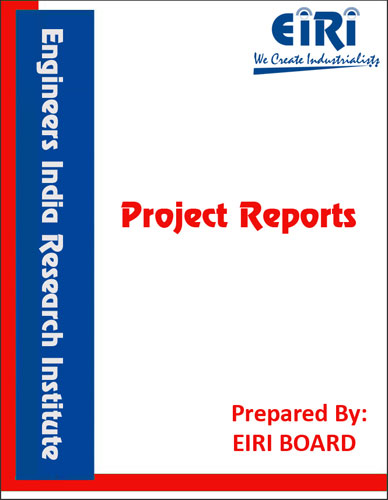ANTI CORROSION CHEMICALS (S.T.P.P. AND NaNO2)
The project report includes Present Market Position and Expected Future Demand, Market Size, Statistics, Trends, SWOT Analysis and Forecasts. Report provides a comprehensive analysis from industry covering detailed reporting and evaluates the position of the industry by providing insights to the SWOT analysis of the industry.
We can prepare PROJECT REPORT as per your INVESTMENT PLAN for BANK LOAN REQUIREMENT and INDUSTRY ANALYSIS. All reports are prepared by highly qualified consultants and verified by a panel of experts.
Have Query? Click Here to Chat
Industry Expert is Online, Chat with him for more detail.

Corrosion is a chemical process and causes the wastage as a chemical action is of two types, (a) Direct Chemical Corrosion (b) Electro-Chemical attack.
Due to both types of reactions there is decrease in the free energy of the system. Direct chemical corrosion takes place when a metal is in contact with gases or moisture. Electro-chemical attack is brought about when a metal is immersed in a liquid, there is a current set up in the system. The current is carried by electrodes of the corroding metal and the ions of the solution. The current is carried by the metal ions which pass into solution or by ions in the solution which may or may not be metal ion, depositing over the metal surface.
Metal component of automobile cooling system exposed to water corrode and rust and create contamination that will clog the water jackets and radiator passages. Due to corrosion the damager cooling system take place as a loss of metal resulting in failure or pertoration of parts, furthermore, corrosion on the surface of affected metal reduces heat transfer within the water jackets and in the tubes of the radiator even before it builds to the point of clogging the tube themselves.
Corrosion on some specific metals in the cooling system such as stainless steel brass solder, aluminium, and copper may be the result of direct attack by water, but it is more likely caused by galvanic corrosion, sometimes calles electrolytic corrosion. Galvanic action occurs when desimilar metals in contact are unmersed in a liquid that can carry a current.
In water cooling system, poly phosphate nitrites, and chromates has been used, although in recent year the use of the alter has been discouraged even in closed system because of environmental consideration. The anti-freeze mixtuers used in automoblie cooling systems present a difficult problem because of the presence of metal like, iron, copper, lead-tin solders, aluminium, as well as rubber are in contact, encourages galvanic corrosion. The successful chemical are Borates, PolyPhosphates, and mercapto benzothiazole (an organic inhibitors).
Other corrosion inhibitors are chromate with poly phosphates zinc or both, zinc with phosphonates or silicate, phosphonatemolybdate or lignin derivation, and polyphosphate with phosphonate or silicate.
INTRODUCTION
PROPERTIES & USES OF CHEMICAL INHIBITORS
LIST OF ANTI CORROSIVE CHEMICALS
B.I.S. SPECIFICATIONS
MARKET POTENTIAL
IMPORT DATA OF ANTI CORROSIVE
EXPORT DATA OF ANTICORROSION
MANUFACTURERS OF S.T.P.P
SODIUM NITRITE
PROCESS OF MANUFACTURE
TECHNOLOGY AND ENGINEERING OF SODIUM TRIPOLY PHOSPHATE
DRY SINGLE-STAGE METHOD OF SODIUM TRIPOLYPHOSPHATE
MANUFACTURING PROCESS FOR THE PREPARATION OF ZINC PHOSPHATE
MANUFACTURING PROCESS FOR THE PREPARATION OF ZINC PHOSPHATE
PROCESS FLOW DIAGRAM FOR THE MANUFACTURE OF ZINC PHOSPHATE
RAW MATERIAL REQUIREMENTS
MANUFACTURE OF SODIUM TRIPOLYPHOSPHATE (NA5P3O10 OR STPP)
PLANT LAYOUT
PRINCIPLES OF PLANT LAYOUT
PLANT LOCATION FACTORS
EXPLANATION OF TERMS USED IN THE PROJECT REPORT
PROJECT IMPLEMENTATION SCHEDULES
SUPPLIERS OF PLANT AND MACHINERY
SUPPLIERS OF RAW MATERIALS
APPENDIX – A:
1. COST OF PLANT ECONOMICS
2. LAND & BUILDING
3. PLANT AND MACHINERY
4. FIXED CAPITAL INVESTMENT
5. RAW MATERIAL
6. SALARY AND WAGES
7. UTILITIES AND OVERHEADS
8. TOTAL WORKING CAPITAL
9. COST OF PRODUCTION
10. PROFITABILITY ANALYSIS
11. BREAK EVEN POINT
12. RESOURCES OF FINANCE
13. INTEREST CHART
14. DEPRECIATION CHART
15. CASH FLOW STATEMENT
16. PROJECTED BALANCE SHEET



